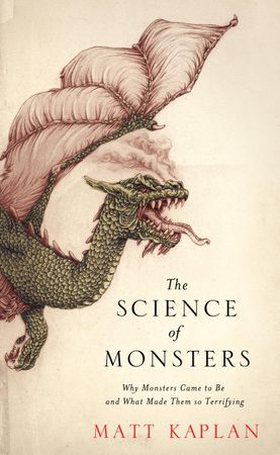
The Science of Monsters ebok
Andre har også kjøpt
Modern audiences do not find dragons frightening. Fascinating as mythical creatures, yes, but terrifying, no. Yet, present them with a story about a virus that can kill a healthy adult in hours and they will have nightmares for weeks. The difference between the two is believability. Monsters are at their most frightening when they carry characteristics that tie them to the real world in some way.
Preposterous as they might seem today, dragons were no different in ancient times. Humans long ago stumbled upon skeletons that had sharp teeth and talon-like claws. These fossils were real and some were frighteningly large. Those who looked at them could only guess at how dangerous the animals that they belonged to must have been. From such interactions, dragons were born. Yet, in spite of ample physical evidence that dragons existed, none were ever seen in the flesh. Dragon bones were ultimately proven to be the bones of huge predatory dinosaurs like Tyrannosaurus Rex, but before the mystery was solved, they were the makings of frightening beasts that managed to evade human sight by lurking deep within the shadows of the wild.
The Science of Monsters will explore monsters that have haunted humanity throughout the ages, from Medusa to sea serpents, giants, and vampires. In each chapter Kaplan uses scientific principles, current research, and his thorough knowledge of the natural world to explain why specific monsters came to be and what it was about them that was so terrifying to the people who brought them to life.






